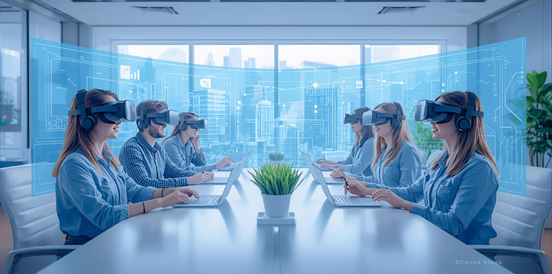VR and AR – Future technologies for the world of work
BDA AGENDA 22/25 | Special feature of the week | October 30, 2025
VR and AR – Future technologies for the world of work
Virtual reality (VR) and augmented reality (AR) are no longer just gimmicks, but are developing into real drivers of innovation in the world of work. Already 20% of companies in Germany use VR or AR technologies, with a further 36% planning to do so. The potential is enormous: production processes become more efficient, workflows are simplified, and employees can acquire new skills in a safe, digital environment.
What is the difference between VR and AR?
VR transports users into a completely digital world where they can experience realistic training, simulations, or meetings with the help of VR glasses and handheld devices. VR offers a protected environment for practicing new processes without risk, which is particularly useful for training and safety courses. Teams in different locations can collaborate virtually, saving time and money and boosting motivation.
AR, on the other hand, enhances the real world with digital information that is displayed via AR glasses, tablets, or smartphones. For example, employees receive step-by-step instructions directly in their field of vision during machine maintenance or repairs. AR technologies can greatly simplify and accelerate onboarding or lateral entry, for example.
Practical examples and opportunities
Whether for career guidance for students, recruiting, onboarding, training, product development, or marketing, VR and AR open up a wide range of applications. Companies such as BSH Hausgeräte and Voith demonstrate how digital twins, virtual tours, and immersive 3D environments are revolutionizing collaboration, learning, and product presentation.
Advantages and challenges
The advantages are obvious: increased efficiency, time and cost savings, better employee retention, and modern employer branding. Companies that use VR and AR position themselves as innovative and attractive to skilled workers. The main challenges are the investment costs, the necessary expertise, and legal issues such as data protection and occupational safety. Successful implementation therefore requires a change process that trains employees and highlights the advantages of these technologies.
Outlook
This development is only just beginning: falling costs, more user-friendly hardware, and intelligent software solutions are making VR and AR increasingly accessible. Companies that embrace these technologies early on will secure their competitiveness and shape a modern, future-oriented working environment. Virtual and augmented reality are not trends—they will soon be an integral part of our everyday working lives.








